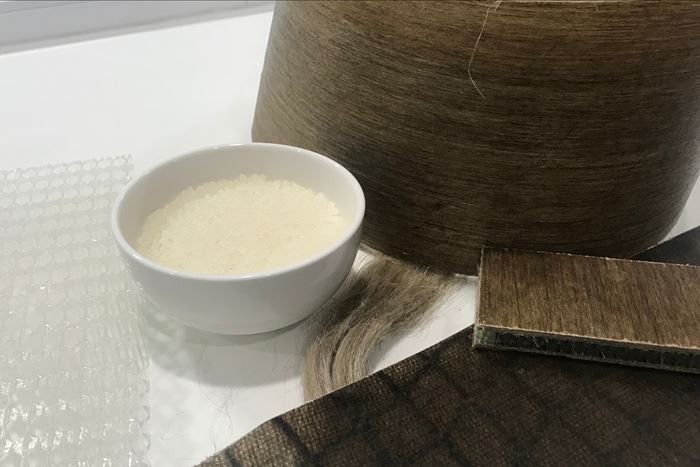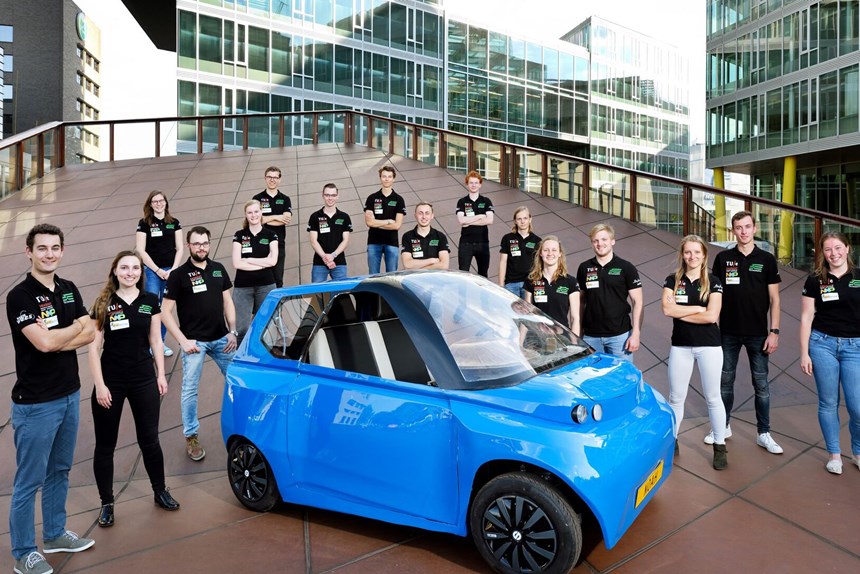Biobased PLA Composite Used in World's First 'Circular' Car
Total Corbion’s high-heat PLA and natural flax fiber sandwich panels were used for the car’s structural parts.
Over the last few years, we have all seen PLA bioplastic evolve beyond the important role it has been playing in packaging applications to increasingly more durable and structural parts in a variety of consumer goods and other applications. Perhaps one of the most exciting is what appears to be the world’s first biobased, circular car, successfully designed and built in the Netherlands by the Technical University (TU) of Eindhoven, earlier this year.
Reportedly, this is the first time that a car’s chassis and all its bodywork has been made from natural and biobased materials—no metal or traditional plastics were used for the structural parts of the car. The parts are made up of light and strong sandwich panels, based on natural flax fiber and Luminy PLA supplied by the Netherlands’ Total Corbion PLA (U.S. office in New York, N.Y.).
Named Noah by the TU/ecomotive student team, the vehicle was designed as a city car and features two seats and a spacious trunk. In addition to its biobased composition, it is also ultra-light and electrically-powered. Noah reaches a top speed of 110 km/hr (68.35 miles/hr) and the battery range goes to 240 km (149.13 miles). At 360 kg (793.60 lb), the weight of the car excluding batteries is less than half the weight of comparable production cars. The parts are also recyclable, resulting in a 100% circular car, sustainable in all life phases.
The PLA supplied by Total Corbion PLA for use in the car is biobased and recyclable and made from renewable resources, offering a reduced carbon footprint versus many traditional plastics. High heat Luminy PLA grades were used to construct the car, in order to ensure durability and sufficient heat resistance.
Said François de Bie, Senior Marketing Director at Total Corbion PLA, “The result of this fantastic project shows just how far biobased materials have come, to produce such a complex product as a car. Noah is the proof that PLA is suitable for so much more than packaging. This is the first ever car to feature a fully biobased chassis and body panels. At Total Corbion PLA, we look forward to working together with the entire value chain to bring more high performance, durable and circular applications to market.”
Related Content
-
How to Optimize Your Molds and Hot Runners for Processing Bioresins
Demand for bioresins is growing in molded goods, particularly as a sustainability play to replace fossil-fuel based materials, but these materials are not a drop-in replacement for traditional materials. Molds and hot runners need to be optimized for these materials.
-
How to Extrusion Blow Mold PHA/PLA Blends
You need to pay attention to the inherent characteristics of biopolymers PHA/PLA materials when setting process parameters to realize better and more consistent outcomes.
-
Blend Amorphous PHA with PLA to Improve injection Molded Part Properties
Adding aPHA to PLA can boost a range of mechanical properties and expedite composting. Here are the details as well as processing guidelines for injection molding the blends.


















